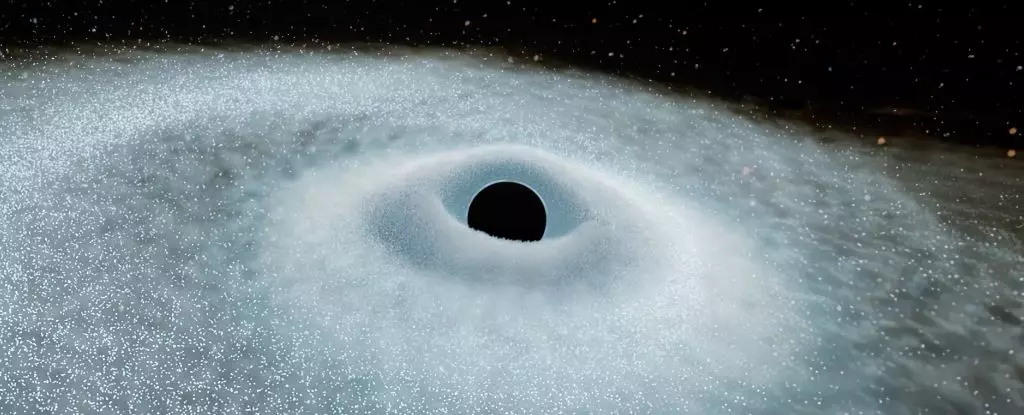Astrophysics has always held a certain magic, a mysterious allure that beckons scientists to delve into the enigmas of the universe. Recent revelations brought forth by the Gaia space telescope have unraveled new threads in this vast tapestry by identifying an unprecedented phenomenon: Extreme Nuclear Transients (ENTs). These cosmic explosions are fundamentally different from previously known tidal disruption events (TDEs) and herald a new chapter in our understanding of stellar deaths and black hole interactions. If TDEs were an invitation to explore the darker recesses of black holes, ENTs open the gates to an entire realm of cosmic illumination, showcasing powerful interactions between supermassive black holes and massive stars in ways we’ve never encountered.
Gaia’s Unintended Triumph
Launched to chart the Milky Way, Gaia’s core mission focused on precise parallax measurements and intricate mappings of celestial bodies. However, serendipity smiled on its project when it inadvertently caught two events—Gaia16aaw in 2016 and Gaia18cdj in 2018—that shimmer in data like cosmic jewels. Each flare, initially perplexing, revealed luminosities that dwarfed anything known before, with energies akin to the light emitted by 100 Suns throughout their lifetimes. This observation challenges the previously held beliefs about the limits of brightness and duration that such events could attain. Rather than merely cataloging stars, Gaia has turned into a harbinger of stellar drama—a cinematic lens focusing on the most explosive scenes of galactic storytelling.
The Nature of Extreme Nuclear Transients
In traditional astrophysical terms, tidal disruption events have followed a more predictable script: a star approaches a black hole, is ripped apart, and subsequently brightens before fading away in a sequence that can render a haunting elegance. However, the newly characterized ENTs stand in stark contrast to this established narrative. With brightness nearly tenfold that of ordinary TDEs, these luminous spectacles linger, offering prolonged visibility that dwarfs even the brightest supernovae, which typically flicker and fade with puzzling brevity. This newfound theatrical extension poses critical questions: What mechanisms allow ENTs to sustain their brilliance? What unique conditions contribute to their formation? Each question invites astrophysicists deeper into the heart of cosmic chaos.
Comparative Luminosity and Implications
ENTs have surged onto the cosmic stage with unprecedented force, defying previous conceptual frameworks that governed our understanding of stellar explosions. To put this phenomenon into perspective, consider a supernova—the dramatic conclusion of a star’s life. Supernovae have long been regarded as the brightest events in the universe; however, ENTs are reshaping our comprehension. The implications of such extreme events are manifold. They suggest that supermassive black holes might grow in mass and significance by consuming stars on an explosive scale, contributing to our understanding of how these behemoths evolve and interact with their environments.
While ENTs occur at a staggeringly rare incidence—around 10 million times less frequently than supernovae—their rarity does not diminish their importance. Each observation is a stepping stone toward understanding one of the most enigmatic objects in astrophysics: the supermassive black hole. Hinkle and his colleagues have likened ENTs to a new tool in the astrophysicist’s toolkit, enabling them to probe the mass and growth mechanisms of these incomprehensibly massive entities.
Looking Back in Time
One compelling facet of observing ENTs lies in the nature of light itself. In the realm of astrophysics, observing distant objects means witnessing their past—light emitted from these incredible events takes millions or even billions of years to reach us. The further we look into the cosmos, the more history we’ve unraveled. With ENTs being exceptionally bright, we now have the means to glimpse even the most distant black holes and their interactions with massive stars. This ability to examine the distant cosmic past not only feeds our insatiable curiosity but also reshapes the narrative of galaxy formation and development.
Future Research and The Cosmic Landscape
As researchers continue to analyze the implications of Gaia’s accidental brilliance in revealing ENTs, the landscape of astrophysics is poised for significant transformation. The groundwork laid by these findings is just the beginning. Future telescopes will need to account for ENTs as they expand our observational reach and refine existing models of stellar behavior around black holes. There’s much at stake in understanding these events, as they illustrate not just the violent end of stars but also contribute to a more profound narrative: the evolution of galaxies and the role of black holes in sculpting the universe as we know it.
Astrophysics is not just about cosmic observations; it’s a quest for understanding, one that connects the spokes of our existence with the wider universe. With the emergence of ENTs, Gaia has effectively illuminated another corner of the cosmic stage, inviting further exploration and curiosity into the infinite wonders of space.


Leave a Reply